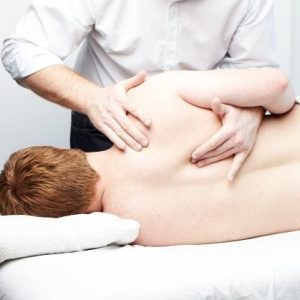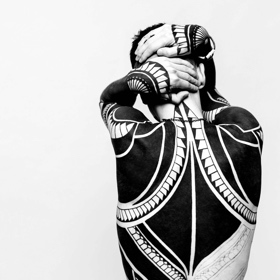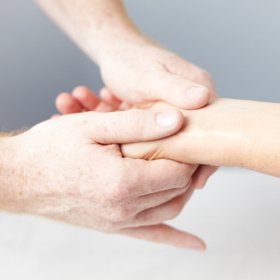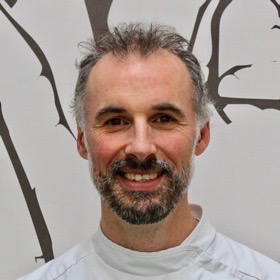Dealing with Chronic or Undiagnosed Pain
The stories we tell…
How we relate to pain, especially undiagnosed pain can make a difference to how we heal. Using the example of lower back pack, find out how we can help ourselves and be supported to come through it, by Justin Redpath, Osteopath, Massage Practitioner and Craniosacral Therapist at Shine.
 My journey to osteopathy has been a long one. I had thought about it as a teenager when I was a keen county athlete and rugby player, and osteopathy was a great help when I was injured, speeding me back to the fray.
My journey to osteopathy has been a long one. I had thought about it as a teenager when I was a keen county athlete and rugby player, and osteopathy was a great help when I was injured, speeding me back to the fray.
Feeling the hands of these skilful people manipulating my body in strange ways and hearing them speak the language of anatomy seemed wondrous and slightly mysterious and planted the seed. However that seed had to wait a long time to germinate, as 20 years passed before I was able to take the plunge and embark on the arduous osteopathy training.
Before I started studying, I thought that the body was in essence a complicated machine, and all I would need to do was learn how to diagnose which part was injured and then learn the particular technique to help that injured part to heal. However the reality was much more complex, and I have come to appreciate the manifold and interwoven complexity of threads, that weave together during a treatment. Reflecting on the differences of what I thought learning osteopathy would be, and the reality of what it is, made me think of something I have found to be an important part of helping clients overcome the issues they walk through the door with.
 As I had built a narrative and story about how the body works, and what osteopathy would be, so most people who come for an appointment have also constructed a story about what has happened to them and what their particular pain means. Sometimes this is helpful, but very often, like my narrative of the body, they are not based on firm foundations. Being invested and attached to such beliefs can be an obstacle to long term recovery (1). Exploring these narratives can be a hugely transformative and healing aspect of a treatment. However this needs to be done in a sensitive way, being careful not to in any way invalidate a persons pain experience, which is always real.
As I had built a narrative and story about how the body works, and what osteopathy would be, so most people who come for an appointment have also constructed a story about what has happened to them and what their particular pain means. Sometimes this is helpful, but very often, like my narrative of the body, they are not based on firm foundations. Being invested and attached to such beliefs can be an obstacle to long term recovery (1). Exploring these narratives can be a hugely transformative and healing aspect of a treatment. However this needs to be done in a sensitive way, being careful not to in any way invalidate a persons pain experience, which is always real.
Sometimes these thoughts can revolve around what we think is wrong with our body. Low back pain (LBP) is extremely common. The National Institute for Health and Care Excellence (NICE) estimates a quarter of the population will experience it in a given year, and is something I see daily in clinic. It can be very worrying and the sufferer feels like something terrible has happened, and naturally wants to know what is going on. Unfortunately the internet and media is full of bad advice and often healthcare advisors unintentionally propagate outdated advice or diagnosis.
There are worrying causes of back pain, which need to be ruled out, but I am referring to the 90% of presentations that have no worrying cause. It is common to think that all back pain stems from tissues that have been badly injured or damaged. But this is often not true (2). Because its natural to think that if something is damaged you should protect it, perhaps by taking time off work, and minimising moving until the pain has gone.
 However its widely accepted that exercise is a very important component in speeding LBP recovery (3), (4), and staying away from work is also related to poor recovery (5). While its good to modulate your activities for a short time during an acute episode of LBP, you can see how this pattern of thinking can create a vicious circle, staying away from work, then not moving, which slows recovery and the pain lingers, so not going back to work, not moving etc etc, thereby embedding the back pain in a more chronic way.
However its widely accepted that exercise is a very important component in speeding LBP recovery (3), (4), and staying away from work is also related to poor recovery (5). While its good to modulate your activities for a short time during an acute episode of LBP, you can see how this pattern of thinking can create a vicious circle, staying away from work, then not moving, which slows recovery and the pain lingers, so not going back to work, not moving etc etc, thereby embedding the back pain in a more chronic way.
At times it can take a great deal of courage and trust to be able to let go of the story we have around our pain. If the pain is longstanding, its almost as if it has become a part of our identity. Gradually over the years it has grown to occupy a big space in our interior world, and becomes a familiar part of our lives without us realising it. I am mindful of a client who came to me, who had been in pain for many years. After a number of sessions that had not really helped, we looked further into the context of their lives when they were injured. Through these insights they went to another therapist more able to help, but a number of months later came back saying they realised on a subconscious level they had not been ready to let go.
 Most people come to see me because they are in pain of one sort or another. Sometimes there is a very clear tissue based cause of the pain/disability, and these cases often have a simple remedy and time frame for recovery. These cases also fit within the understanding of what most people think causes pain, ie damaged tissues. However, its possible to feel pain with no tissue damage at all (6) and there is a great difference between chronic and acute pain (7).
Most people come to see me because they are in pain of one sort or another. Sometimes there is a very clear tissue based cause of the pain/disability, and these cases often have a simple remedy and time frame for recovery. These cases also fit within the understanding of what most people think causes pain, ie damaged tissues. However, its possible to feel pain with no tissue damage at all (6) and there is a great difference between chronic and acute pain (7).
So these stories we have about what is wrong with us, and the beliefs we have around them, can play a big part in how we respond to treatment, and I have found exploring them to be a crucial part of my work as an osteopath.
Addressing these unhelpful beliefs, and  supporting changing the narrative of stories that harm ones ability to heal, over time can be the difference to a lasting resolution of the problem, and not just a temporary fix. This really augments and enhances the work of my hands, soothing inflamed tissues and helping to take a person from an adrenalised state of fight and flight where the body is tense and wont let go, to a more relaxed and calm place, allowing the inherent wisdom of the body to heal and restore balance.
supporting changing the narrative of stories that harm ones ability to heal, over time can be the difference to a lasting resolution of the problem, and not just a temporary fix. This really augments and enhances the work of my hands, soothing inflamed tissues and helping to take a person from an adrenalised state of fight and flight where the body is tense and wont let go, to a more relaxed and calm place, allowing the inherent wisdom of the body to heal and restore balance.

Above all I am amazed daily and humbled by seeing how people overcome their very difficult and ingrained symptoms and witnessing the transformation they make in their lives.
For the month of November 2021, you can enjoy £10 off all of Justin’s treatments.
Email Justin to find out more
References
- https://www.pain-ed.com/blog/2017/10/12/making-sense-of-fear-in-people-with-low-back-pain/
- https://uihc.org/health-library/common-misconceptions-about-chronic-back-pain
- https://www.nice.org.uk/guidance/NG59/chapter/Recommendations#assessment-of-low-back-pain-and-sciatica
- https://academic.oup.com/aje/advance-article-abstract/doi/10.1093/aje/kwx337/4557909
- https://www.aafp.org/afp/2007/1115/p1497.html
- https://www.youtube.com/watch?v=oji2mfcjisk
- https://knowpain.co.uk/wp-content/uploads/2014/05/TazzyPersistentPainBooklet.pdf